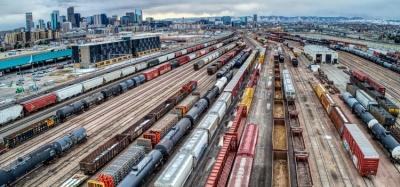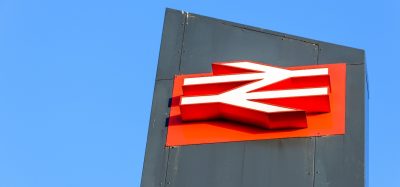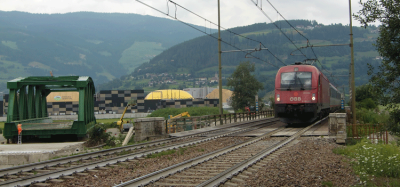Danish rail tracks – demanding more
Posted: 31 May 2006 | | No comments yet
Approximately 2,700 trains are in operation on the Danish tracks every day.They make use of over 3,240km of tracks, cross 2,342 bridges and intersect with roads at numerous points. The technology involved is mostly of the standard proven type,with a general inclination towards high quality.This is not a land of cutting edge solutions – but this may change in years to come when larger renewal plans are implemented.
Approximately 2,700 trains are in operation on the Danish tracks every day.They make use of over 3,240km of tracks, cross 2,342 bridges and intersect with roads at numerous points. The technology involved is mostly of the standard proven type,with a general inclination towards high quality.This is not a land of cutting edge solutions – but this may change in years to come when larger renewal plans are implemented.
Approximately 2,700 trains are in operation on the Danish tracks every day.They make use of over 3,240km of tracks, cross 2,342 bridges and intersect with roads at numerous points. The technology involved is mostly of the standard proven type,with a general inclination towards high quality.This is not a land of cutting edge solutions – but this may change in years to come when larger renewal plans are implemented.
The Danish Rail Tracks is, like in most of Europe, a mix of older material and generations of upgrades. The major concern lately is that track joints have been generating problems, not holding inside their tolerances and thus giving way to speed limitations. The existence of rail joints is due to the fact that the overall control system in Denmark is based on electrically separated blocks. Other block systems are in use such as axel counters, but there is no radio or GPS based system currently in use.
Tracks
The standard Danish rail is a UIC 60 and is common for almost every track. In some places, mainly on side tracks, a lighter version is still in use, but all new tracks are of the heavier type. The iron used on all new tracks is high quality German steel, a decision following a minor train accident in 2004. Tracks in Denmark are designed to meet the demands of material and speed and on the main lines which gives way to a theoretical top speed of 200km/h. Current top speed is 180km/h.
The tracks covering Denmark are among the oldest in Europe with an average age of 30 years.While this is not causing any security concern, it has consequences for both regularity and the comfort of the daily users of the railroads. The tracks are renewed when needed and with consideration to European standards. This work will continue to be a central part of the work done by Rail Net Denmark in the future.
Bearings
Rail net Denmark has three different types of bearings; wooden bearings, duo block bearings and modern one piece concrete bearings. Most wooden and duo block bearings are up for renewal, since most duo block bearings were put in use during the 70s. The duo block bearings has proven to be less than optimal for the Danish costal climate since it’s high concentration of salt has minimised the expected life span.
Speed limits
Main lines have a maximum speed of 180km/h meaning that the connections between the major cities Copenhagen,Aarhus and Esbjerg and south to Germany are driven at this speed. Most other lines have limitations of 160 or 120km/h according to the needs and distances.
Automatic train protection systems
The main lines in Denmark all have full Automatic Train Control for safety and most of the secondary lines have some kind of speed control, either full of partial.Automatic Train Control is also found in some places on the urban train system in Copenhagen.
Electrified lines
From Copenhagen and out to the west, the lines are electrified crossing Sealand and Fyn, connecting at the arrival to Jutland with the southbound line to Germany which is also electrified. This means that the so called ‘Denmark Corridor’ is electrified with 25,000 volt ac.Also, the urban train system in Copenhagen runs on electricity, but here the system uses a steady current at 1,600 volt dc, due to the shorter distances of the lines and the historical fact that the urban trains were electrified first.
Interlocking systems
The most commonly used interlocking system is the Bombardier free wired relay system. Later installations are based on geographical relay sets with Automatic train protection systems, sometimes constructed as a combined relay and computerised system. Basic parts in these systems are Bombardier, but the implementation and design are sometimes made by other companies.
Denmark is still using some electromechanical interlocking systems such as the Siemens 1912/46, but these are being replaced with newer systems.
The newest interlocking system in use is the Siemens Sicas S5 which was put to use in 2005 on a line from Aarhus to Grenaa.Also around the large bridge over the waters separating Sealand from Fyn and the mainland, the interlockings are fully electronic and computerised.
Centralised traffic control
The CTC systems are a mix of older relay systems from Bombardier and Ericsson and newer computerised installations from,mainly, Siemens.The urban train system is currently changing to a fully electronic system from Siemens called DIC-S.
Operators on the Danish tracks
The DSB – the former state owned train and track operator, now only partly owned by the state – is by far the biggest operator on the Danish tracks. Only in Jutland is their position challenged by Arriva that holds the contract for a large part of the Danish mainland. The biggest, and almost the only, freight carrier is Railion, also historically connected to the former state owned train operator.







